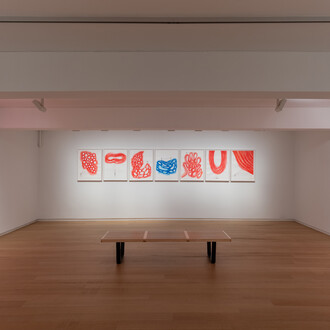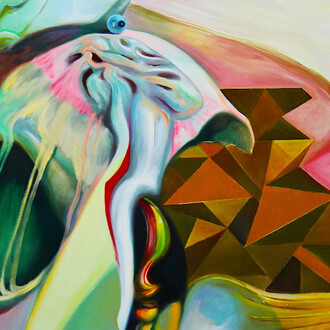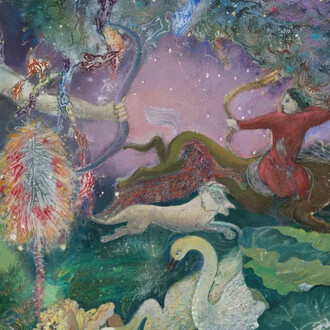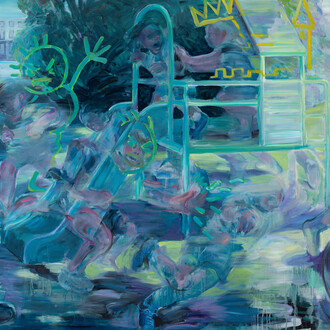Galerie Templon is welcoming François Rouan, one of the leading lights of the French contemporary art scene, to its New York space for his first solo show in the city. Coordinated by Alfred Pacquement, honorary general curator of heritage, the exhibition features a selection of paintings and photographs taken from the artist's recent and earlier series as well as a loan from the Pierre and Tana Matisse Foundation in New York.
At the start of his career François Rouan was linked with the Supports/Surfaces movement without officially associating himself with it. Since then he has trodden a unique path. He gradually extended his painting work with in-depth research into collages, leading to his first experiments with braiding in 1965. He further broadened his practice in the 1980s with the use of different mediums, both photographic and film-based. He deconstructed the painting’s traditional structure and broke new ground with an exploration of fresh avenues in French contemporary painting.
As abstract expressionism flourished in the USA, abstract art in France renounced lyrical abstraction in favour of a more radical approach to the concept of the painting. The New York Pierre Matisse Gallery showed the young François Rouan’s work alongside established artists such as Simon Hantaï and Pierre Soulages. His art went on to feature in the collections of major American museums including MoMa and the Metropolitan Museum of Art.
The retrospective exhibition at Galerie Templon features thirty pieces, wax paintings and photographic work in various formats - square, rectangular and oval - all created between 1969 and 2024. Recorda interweaves the artist’s brand new eponymous series, created in 2023-2024, with older pieces from the late 1960s, 1980s and 1990s. Together they bear witness, once again, to the artist’s insatiable passion for working with the surface. Rouan begins by focusing on strips of canvas dyed in a palette of explosive hues, from canary yellow and brick red to cobalt blue and coal black. He carefully braids them on the painting then plays with the result, boldly shredding, interlacing, reviewing, completing or even breaking up the surface and starting all over again. Behind the seeming simplicity of motifs and colour range lie some of the metaphysical questions that obsess the artist, such as the painting as a work of art, the world’s origins, body image, and human existence.
Born in Montpellier, France, in 1943, François Rouan moved to Paris in 1961 to study at the École Nationale Supérieure des Beaux-arts. He was artist-in-residence at Villa Medici from 1971-1973 and in 1985 was appointed Commandeur des Arts et des Lettres, the highest distinction of the French order of merit. His work has featured in a variety of solo exhibitions and retrospectives, including at the Centre Pompidou in Paris in 1975, 1983 and 1994; Musée d’Art Moderne in Villeneuve-d’Ascq in 1995; Les Abattoirs in Toulouse in 2006, and Musée Fabre in Montpellier in 2017.
His art has been exhibited worldwide at museums such as the Stadtische Kunsthalle in Düsseldorf (1979), Sezon Museum of Art, Tokyo (1997) and Central Academy of Fine Arts in Beijing (2000). It was also included in the Lacan, the exhibition group show at Centre Pompidou-Metz from January to May 2024. In June 2024 a travelling exhibition showcased his work creating stained-glass windows for the Royal Fontevraud Abbey. In June 2025, the Lyon Musée des Beaux-Arts will be paying tribute to his work with a retrospective exhibition. His art features in numerous prestigious collections including at the Musée National d’Art Moderne – Centre Georges Pompidou, Paris, France, Fondation Cartier pour l’Art Contemporain, Paris, France, Metropolitan Museum of Art, New York, USA, and MoMA, New York, USA.
















